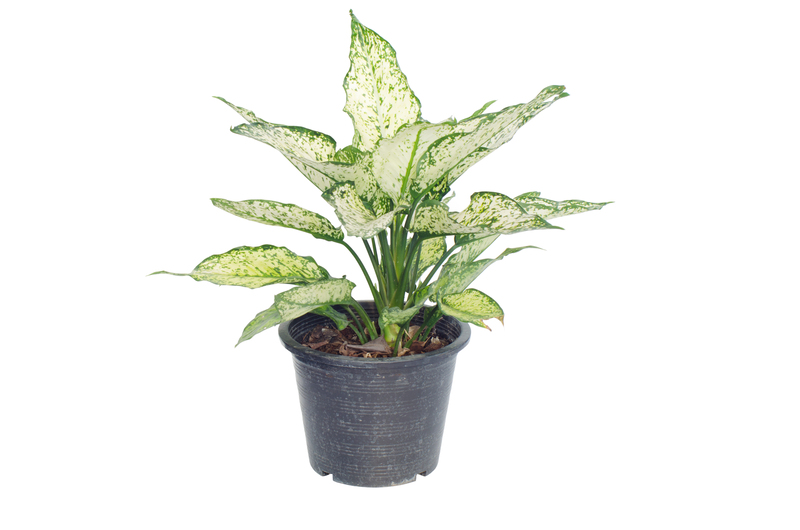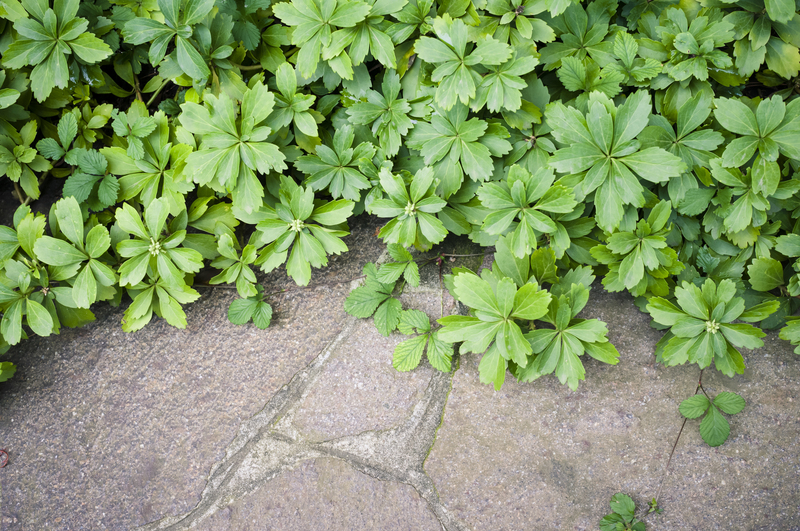A Guide to the Key Tools for Every Outdoor Gardener
Posted on 23/06/2025
A Guide to the Key Tools for Every Outdoor Gardener
Gardening outdoors is both a rewarding and therapeutic activity that brings us closer to nature. To ensure success in your outdoor gardening endeavors, having the right tools at hand is crucial. Whether you are a seasoned horticulturist or a beginner just breaking ground, knowing the essential gardening tools will not only save you time and effort but also improve the overall health and beauty of your garden.

Why Are Proper Outdoor Gardening Tools Important?
Outdoor gardening tools are specifically designed to make each gardening task more efficient and less physically taxing.
High-quality gardening equipment can help you cultivate the soil, plant, prune, water, and maintain your green space with precision and ease.
Advantages of Using the Right Tools in Outdoor Gardening:
- Improves productivity: Well-chosen gardening tools expedite tasks and allow gardeners to accomplish more.
- Prevents injury: Using ergonomic and purpose-built tools helps to reduce strain on hands, back, and joints.
- Encourages proper plant care: The right garden tools ensure delicate plants aren't harmed during maintenance.
- Enhances enjoyment: Gardening is far more fulfilling when you have the correct equipment.
Must-Have Hand Tools for Every Outdoor Gardener
1. Hand Trowel
The hand trowel is a garden essential for both beginners and expert gardeners. This small but mighty tool is used for digging, transplanting, and mixing soil or fertilizer. Choose a trowel with a sturdy, comfortable grip and a rust-resistant blade for longevity.
2. Garden Fork
A garden fork (sometimes called a digging fork or spading fork) is used for loosening, lifting, and turning over soil. Its strong, pointed tines penetrate compacted soil and help break up clumps, aerate the ground, and integrate compost or fertilizer.
3. Pruning Shears (Secateurs)
Pruning shears are critical for maintaining plant health. These sharp garden scissors are perfect for trimming and shaping shrubs, harvesting vegetables, or deadheading flowers. Look for bypass pruners for clean cuts on live stems, or anvil pruners for dead wood.
4. Hand Weeder
Weeding by hand is often the best way to keep your flower beds and vegetable patches tidy. A hand weeder is a slender tool designed to pull up weeds, roots and all, with minimal disturbance to surrounding plants.
Essential Long-Handled Tools for Outdoor Gardeners
5. Garden Hoe
A garden hoe is invaluable in any outdoor gardening setup. Used for breaking up soil, removing weeds, and creating furrows for planting, hoes come in several shapes including the classic draw hoe and the stirrup hoe. Their long handles offer leverage for more extensive ground work.
6. Shovel or Spade
No outdoor gardener should be without a strong, durable shovel or spade. Shovels are generally used for digging holes and moving soil, compost, or mulch, while spades have a flatter, square blade for edging garden beds and slicing through tough roots.
7. Rake
Both leaf rakes and garden rakes serve crucial roles. Use a flexible leaf rake to gather leaves and debris, and a sturdy garden rake to level soil, break up clods, and prepare seedbeds.
8. Watering Can or Hose
Watering equipment is vital for keeping your plants healthy and hydrated. A watering can with a detachable rose allows for gentle watering, while a hose with spray attachment covers larger areas efficiently. Consider investing in a soaker hose or drip irrigation system for water conservation.
Specialized Outdoor Gardening Tools
9. Garden Kneeler and Seat
Comfort is key for extended outdoor gardening sessions. A garden kneeler or seat protects knees from rough surfaces and offers back support, allowing for longer and more enjoyable gardening without discomfort.
10. Loppers
Loppers are large pruning tools with long handles designed for cutting thick branches. Their increased leverage makes them essential for trimming trees, shrubs, and hedges that are too tough for hand pruners.
11. Wheelbarrow or Garden Cart
Moving soil, compost, mulch, and plants is made much easier with a sturdy wheelbarrow or garden cart. They minimize back strain and make transporting heavy loads across your garden far more manageable.
12. Soil Testing Kit
To help your plants thrive, understanding your soil's pH and nutrient content is crucial. A soil testing kit provides quick, easy-to-read results that inform you about the amendments your garden soil may need for optimal growth.
Protective Gear and Accessories for Outdoor Gardeners
13. Gardening Gloves
A good pair of gardening gloves protects your hands from blisters, thorns, chemicals, and moisture. Choose gloves that fit well and are made from breathable, durable materials. For thorny jobs, consider leather gloves for added protection!
14. Sun Protection
Outdoor gardening often means hours exposed to the sun. Always wear a wide-brimmed hat, UV-protective clothing, and non-greasy sunscreen to shield your skin from harmful UV rays.
15. Knee Pads
If you're not using a garden kneeler, invest in high-quality knee pads to provide cushioning for your knees while working close to the ground. This small addition to your gardening outfit can make a significant difference in comfort.
Modern and Innovative Gardening Tools
16. Power Tools
For those with larger outdoor gardens or less time, power tools can be invaluable. Battery-powered hedge trimmers, string trimmers, and cultivators save both time and effort, especially in bigger landscapes.
17. Raised Bed or Planter Tools
Specially designed handheld tools and long-handled cultivators are perfect for reaching into raised beds without bending or straining, making planting and maintenance easier.
18. Plant Markers and Garden Twine
Labeling your plants with durable plant markers and corralling climbers with strong garden twine keeps your garden neat and organized. These tools assist in identifying and supporting your plants as they grow.
Maintenance and Care for Gardening Tools
Taking care of your outdoor garden tools ensures they last longer and work at peak efficiency. Here are some maintenance tips:
- Clean tools after every use to prevent the spread of disease and rust.
- Sharpen blades on pruners, shears, loppers, and hoes regularly.
- Oil metal parts to prevent corrosion.
- Store tools in a dry, secure location, hanging them up if possible.
- Tighten loose screws or handles to maintain tool safety.
How to Select the Best Gardening Tools for Your Needs
With so many types of gardening tools for outdoor use available, it can be overwhelming to build your toolkit. Consider the following tips:
- Assess your garden size and type: A larger space requires more robust tools, while a balcony garden may only need hand tools.
- Choose quality over quantity: Invest in fewer, higher-quality tools made from durable materials such as stainless steel or carbon steel.
- Check ergonomics: Feel the handles and weight of the tools to ensure comfort during extended use.
- Match tools to your plants: If you mostly grow flowers, you may not need heavy digging tools. Vegetable and shrub gardening may require more diverse equipment.
Eco-Friendly Tools and Sustainability in Outdoor Gardening
Today's gardeners can make environmentally conscious choices by selecting eco-friendly gardening tools:
- Choose tools with wooden handles from sustainable sources.
- Opt for manual tools over gas-powered to reduce carbon footprint.
- Use rain barrels and smart irrigation systems to conserve water.
- Recycle and repurpose old tools and containers where possible.

Frequently Asked Questions
- What is the difference between a trowel and a transplanter?
Trowels usually have a larger, broader blade for general digging, while transplanters are narrower for easier movement around established plants. - Do I need both a spade and a shovel in my garden tool kit?
Yes--it's ideal to have both. Spades offer precise digging and edging, while shovels are best for scooping and moving loose material. - How often should I repair or replace garden tools?
Maintain tools after every use, sharpen regularly, and replace when broken, rusted through, or unsafe.
Conclusion: Building Your Essential Outdoor Gardening Tool Kit
Arming yourself with the best outdoor gardening tools is an investment in your garden's future. With the right tools, each job becomes easier, safer, and more enjoyable--giving you more time to appreciate the fruits, flowers, and foliage of your labor.
Start with the basics: a hand trowel, pruners, shovel, hoe, rake, and watering can. Add specialized tools and accessories as you expand your gardening expertise and your garden's needs evolve. By taking care of your tools and choosing sustainable options, you can enjoy many rewarding years as an outdoor gardener.
Ready to transform your green space? Gather your essential gardening tools and let your outdoor adventure begin!

